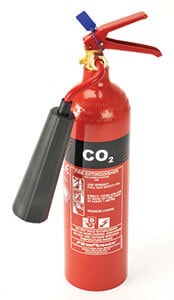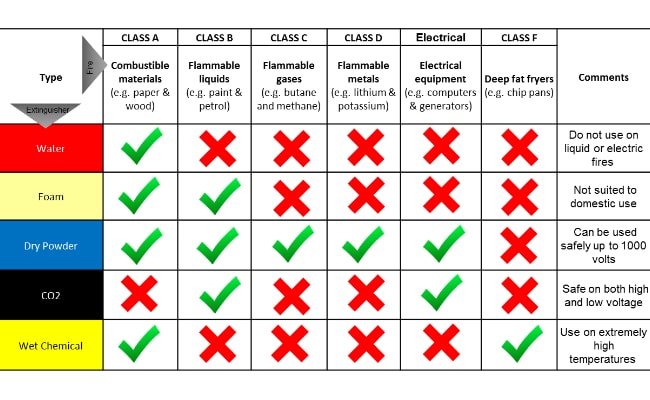CCSS can keep your extinguishers in good working order to comply with regulations.
After an extinguisher has been used, even if only partially, it must be recharged according to the manufacturer’s instructions.
Annual maintenance and correct staff training are essential for your fire-fighting equipment to be effective.
CCSS operatives carrying out Fire Extinguisher maintenance all undertake FIA training including regular refresher training.

In line with the requirements of The Regulatory Reform (Fire Safety) Order 2005, most businesses will have been advised via their fire risk assessment that they should provide fire extinguishers to protect their building users in the event of a fire.
CCSS are the third party accredited to BAFE SP101 accredited in the provision of fire extinguisher design and servicing.
The world of fire extinguishers can be a little complicated with different types of extinguisher recommended to be used for particular types of fire.
At CCSS we like to keep things as simple as possible and won't over complicate the deployment of fire extinguishers, or overcharge! One simple cost per extinguisher per year. And don’t be fooled by suppliers who tell you that you can service your own extinguishers and save money.
Unless you can prove competency, as the responsible person under The Regulatory Reform (Fire Safety) Order 2005 you are still responsible should something go wrong.
So, unless you have a fire specialist on your payroll, make sure you employ a specialist to do your fire extinguisher servicing, you will be surprised, it won't cost you the earth especially if you take other services from CCSS.
Beware the low-cost servicing option as there is always a price to be paid!
Additional Information:
Under the Regulatory Reform (Fire Safety) Order 2005 you are obliged as an employer or building owner to carry out the following in relation to Fire-fighting and fire detection
13.—(1) Where necessary (whether due to the features of the premises, the activity carried on there, any hazard present or any other relevant circumstances) in order to safeguard the safety of relevant persons, the responsible person must ensure that—
(a)the premises are, to the extent that it is appropriate, equipped with appropriate fire-fighting equipment and with fire detectors and alarms; and
(b)any non-automatic fire-fighting equipment so provided is easily accessible, simple to use and indicated by signs.
(2) For the purposes of paragraph (1) what is appropriate is to be determined having regard to the dimensions and use of the premises, the equipment contained on the premises, the physical and chemical properties of the substances likely to be present and the maximum number of persons who may be present at any one time.
(3) The responsible person must, where necessary—
(a)take measures for fire-fighting in the premises, adapted to the nature of the activities carried on there and the size of the undertaking and of the premises concerned;
(b)nominate competent persons to implement those measures and ensure that the number of such persons, their training and the equipment available to them are adequate, taking into account the size of, and the specific hazards involved in, the premises concerned; and
(c)arrange any necessary contacts with external emergency services, particularly as regards fire-fighting, rescue work, first-aid and emergency medical care.
(4) A person is to be regarded as competent for the purposes of paragraph (3)(b) where he has sufficient training and experience or knowledge and other qualities to enable him properly to implement the measures referred to in that paragraph.



